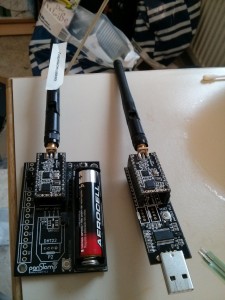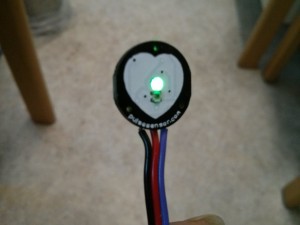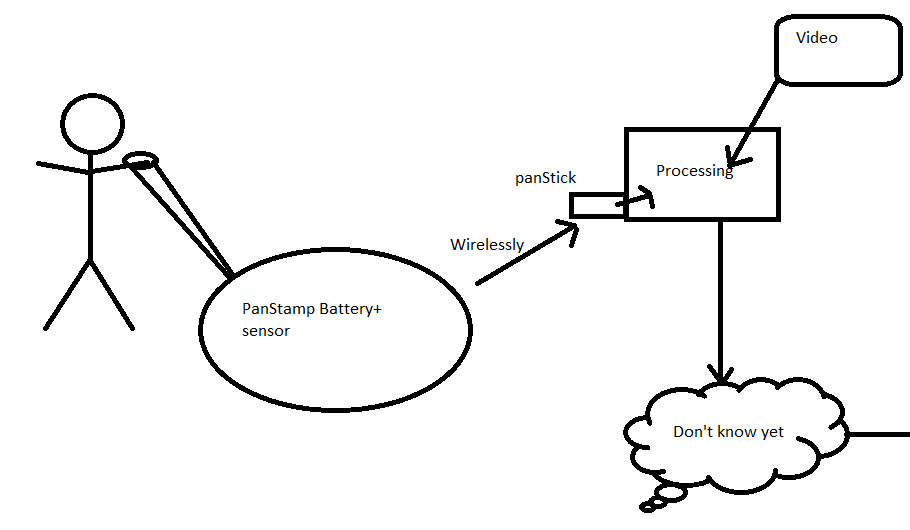Following the Food for “Thought” , we continued to discuss our ideas. A good thing is that the script was out, so based on it, we get a general concept of how things will be. As for technical side, panStamp and pulse sensor were chosen for the next phase
PanStamp
We need to send information from the sensor on the stage to the computer. That is where PanStamp comes in
The PanStamp battery board is our sender- read signal from the sensor and pass it to the PanStick. A bit of soldering work is done on the battery board, mainly for the mobility of using sensor- instead of fixing the sensor, we can remove it at will.
While the energy source is 1.5V AA battery, PanStamp battery board itself can amplify it to 3.3V.
The PanStick reads wireless transmission from PanStamp battery and pass it to the computer via Serial protocol.
Pulse sensor
Pulse sensor uses the principle of light-sensing in order to calculate the heartbeat. It is assumed that when the heart beats, there is some kind of shockwave throughout our body. From that perspective, the beat-per-minute (BPM) and interval -between-heartbeat(IBM) can be measured.
It was kind of a fun journey with the pulse sensor. At the beginning, the result was unstable , but after a while of tinkering, this pulse sensor does what it is supposed to do. Still, low power supply usage can be quite deceptive since the sensor “appears” to be working fine , but instead, you will need to change the code–or to wire it differently.
The guide for it can be found here: Guide for Pulse-sensor
The Pulse sensor ,in our project, shall be wired to the PanStamp battery board.
Model of our approach

